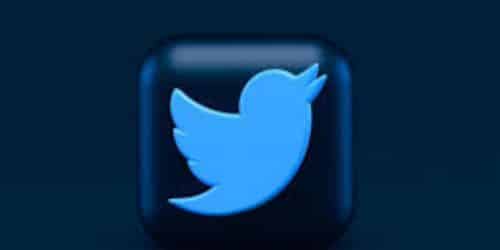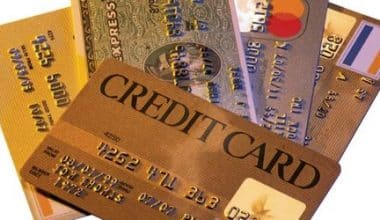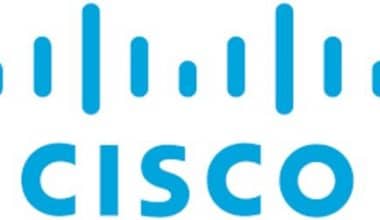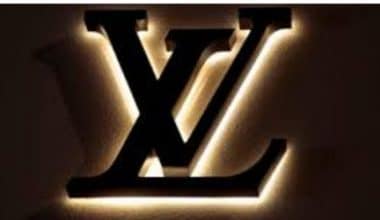Twitter has been around for 15 years and is still one of the world’s most popular social media networks. We all recognize this little blue bird and recognize its little whistle when you receive a notification. But do you know where Twitter’s logo or name came from? Today, we’ll look at the origins and history of the Twitter brand.
Meaning Behind the Twitter Logo
To begin, there are a few interesting facts about Twitter’s iconic logo that you may not be aware of.
- Only in 2010 did the bird become the company’s mascot.
- Twitter paid $15 for the bird design on iStock. Simon Oxley created the design.
- The bird was named “Larry” after basketball player Larry Bird at first.
The bird embodies the essence of online microblogging:
- “Twitter” sounds similar to “tweet,” which is a bird sound.
- A bird represents freedom and limitless possibilities.
- Short messages are delivered at the speed of birds.
The First Twitter Logos
Twitter’s history began in 2005. It did not have the same design as it does today when it was founded by Jack Dorsey, Evan Williams, Biz Stone, and Noah Glass.
Before we get into the different logos of this company, let’s go back to the definition of the word “Twitter.”
One evening, Jack Dorsey and Noah Glass had an idea for a platform where people could post a status update and engage in a conversation. Glass later looked up a name in the dictionary and discovered “Twitter,” which means “chirping” or “agitation.”
Then, Biz Stone created the first Twitter designs, or Twttr as it was known at the time, opting for a signature logo. Yes, for a few logo designs, they decided to remove the vowels from the original word. Finally, the green “twttr” logo with small water drops would be the company’s first logo.
Jack Dorsey published the first tweet on March 21, 2006. Only a few months later, the company was planning a rebranding, and Twttr restored the vowels thanks to Linda Gavin, a designer at the agency Furture Farmers. A new website and logo were completed in three days.
Twitter’s redesigned logo was light blue on white with smooth outlines. This change, however, was not well received by all users. Some thought it was too childish. But that’s what Glass did.
The Evolution of the Twitter Logo
The Twitter Bird logo first appeared in 2010. The basketball legend Larry Bird, who played for the Bolton Celtics, inspired the name Larry T Bird.
Twitter co-founder Biz Sone chose the name because he was from Boston and a Celtics fan. He has also confirmed that the sporting legend was the inspiration.
The bird was not the first version of the Twitter logo, but there have only been a few variations since the first version was created in 2006.
2006 – First Official Twitter Logo
The first official Twitter logo was a refreshing change from the pre-launch design. Linda Gavin, the designer, had only one day to complete it before the official launch. It was a simple wordmark with a unique rounded typeface, small caps, and no spacing between the letters.
The logo’s focus on simplicity went well with Twitter’s overall design, which made people like the site more. This logo, in the sky-blue color that is almost always associated with Twitter, was used for four years before the Twitter bird was made.
2010—The Twitter Bird Icon
After four years of using the wordmark, the founders decided to add something that reflected the company’s identity. The bird was born at this time, and it was said to represent the nature of a tweet—quick and short, like the noises a bird would make. The bird was positioned to the right of the wordmark, which remained unchanged with the exception of a color change to black.
2012 – The Modern Bird
Twitter management recognized the need to refresh the brand’s image in 2012, with an emphasis on even greater simplicity. Twitter had become so popular around the world by that point that the company’s name did not appear to be necessary in the logo. The name was dropped, and the logo was changed to that small bird.
The bird itself has been redesigned to have a more symmetrical, clean-cut appearance. The old bird’s feathers were taken off, and the wings were made of three circles that overlapped each other. They enlarged the icon and changed the color to a darker blue, which made it more appealing to look at, especially against the white background of web pages. This bird was chosen as the symbol for Twitter, and it has become one of the most easily recognized.
Why the Twitter Logo Is Effective
There’s no denying that the bird logo has contributed significantly to the company’s success. Twitter’s emphasis on simplicity is what initially drew people to the platform, and their logo has always been one of the elements that communicate this ethos to their users.
Twitter is very protective of their logo, and there are rules that say it can’t be changed in any way. The company has also been able to keep a consistent brand image across all platforms thanks to this strict policy.
Why is Twitter Logo a Bird?
The bird is a metaphor for the essence of online microblogs because the word “Twitter” sounds very similar to the word “tweet,” which is the sound that birds make. A bird is a symbol of liberty and the boundless opportunities that lie ahead. Brief interactions are transmitted at the same rate that birds fly.
Elements of Twitter Logo Design
While a commendable effort, Twitter’s first official logo pales in comparison to the iconic flattering bird used today. Dating back to the days of the thick rounded sans-serif, Twitter’s logo is proof that perfection is a process that takes time.
The bluebird, with its chirping wings and beak, needs no words to describe itself. The symbol perfectly captures the brief nature of a tweet.
Twitter logo shape and symbol: Twitter’s current logo is a fluttering hummingbird. It was created by artist Martin Grasser, who had recently graduated from the Art Center College of Design at the time he was hired for the project.
15 circles were layered on top of each other to create the illustration. This geometric approach gave each of the bird’s parts a perfect shape: the wings, head, beaks, and belly.
The Twitter logo in 2006 was a simple “Twitter” wordmark in a rounded sans-serif font. The shape of the bird that came later seems to have been influenced by this roundness.
The first bird version of the Twitter logo, which came out in 2010, gave the logo a bit of a kick, but nothing could beat the refined bird version, which came out in 2012. The rounded belly and wings of the bird were shaped by the outlines of perfect circles. Circular arcs of exact geometry were used to make every part of the bird, including the beak.
Twitter Logo Color:
The original Twitter logo was a light blue color. Blue has been shown to be a popular color for websites, especially social networking sites. The logotype was changed to black in 2010, with the bird icon adopting the logotype’s blue.
The 2012 version changed the color of the bird’s blue to make it stand out more against the white background. Even though the color is still light blue, it is closer to true blue than the aquamarine that came before.
Twitter Logo Font:
The text version of the logo was discontinued with the 2012 version. The company explained that text was no longer required to represent Twitter. Linda Gavin designed a custom rounded bubble font face for the first two logo versions.
Twitter’s Early Years
Dorsey pitched the idea to Odeo co-founder Evan Williams during a brainstorming session at the podcasting company. Dorsey was given the go-ahead by Evan and his business partner Biz Stone to devote some time to the project.
In its early days, Twitter was known as twttr. Back then, it was common to drop vowels from words, sometimes because the whole domain name was already taken. Noah Glass, a software developer on the original team, is credited with the name.
The Very First Tweet
On March 21, 2006, Jack Dorsey had the honor of tweeting the first tweet. “Just setting up my twttr,” the message simply stated. During the early stages of development, the team members experimented extensively with SMS messaging. As they worked on the product, they would frequently rack up hundreds of dollars in phone bills.
While the founders were testing Twitter within Odeo’s walls, the company was going through some difficulties. Odeo’s business was killed when Apple released its own podcasting platform. The company’s founders decided to buy the company back from investors. The original team members, led by Evan Williams, Jack, and Biz Stone, purchased the company back.
The members obtained full control of Twitter as a result of the buyback. This move sparked some debate shortly after Twitter’s meteoric rise. People have said that the investors didn’t see how much potential the Twitter platform had.
Some of the original team members, like Team Glass, were left out of the new Twitter company, which was a big deal. Obvious Corporation was the name given to the new company.
Explosive Twitter Growth
Twitter was on the verge of a massive growth spurt in 2007. Attendees sent more than 60,000 tweets per day during one interactive conference that year. The Twitter team had established a significant presence at the evet and was able to capitalize on the platform’s virality.
But it wasn’t always rainbows and sunshine. Twitter had to go through a lot of growing pains in its early days. One of the most difficult challenges was capacity; the platform frequently went offline when overwhelmed by large surges of user activity.
When the service was overloaded, Twitter displayed an illustration by artist Yiying Lu to users. The image depicted a whale being lifted out of the water by eight birds. The team used this image to inform users that they were aware of the server load issues and were working to resolve them. This whale and its error page quickly went viral on the platform. It was dubbed the “Fail Whale.”
Tweet 140-Character Limit to 280-Character Limit
Twitter imposed a 140-character limit because the platform was originally designed for SMS-based communication. This was also the SMS service limit imposed by mobile network carriers, so Twitter had no choice but to follow the rules.
However, as Twitter evolved into a web-based platform, the character limit was kept as a distinguishing feature of branding. Because of this, many users had grown accustomed to it and even liked it.
Even though Twitter users complained, the 140-character limit stayed in place until 2017, when it was changed to 280 characters. In the new era of smartphone use, the original 140-character limit was deemed obsolete.
When users needed to say more, they usually posted multiple tweets. Twitter also said that if the limit was raised, people would spend less time trying to get their thoughts across.
User Innovation on Twitter
As the platform’s popularity grew, users coined new terms and devised new ways to use it. Users, for example, did not have the option of replying to tweets at first. This required them to use the @user name symbol to mention the user of the tweet they were responding to.
This became the standard way to reply, but Twitter eventually realized how annoying it was and added a native reply option. The same thing happened with hashtags, which eventually became a part of the platform.
User-driven functionality also resulted in retweets. Some Twitter users wanted to re-post tweets from other users while giving them credit (the original user). As a result, they began at the “RT” indicator before tweeting the message. Twitter introduced the retweet function in August of 2010.
How to Use Twitter to Inspire Your Logo Design
Despite the fact that the platform’s name was found in a dictionary, Twitter’s founders kept it and associated their brand image with it. First, try to stick to your initial concept, then develop and improve on it. You’ll get the most out of it that way.
For example, by sticking with and developing your initial concept, you will be able to create a meaning, a drawing, and so on. Once you’ve established this concept, and depending on the type of logo you want, keep it simple.
Twitter’s font is simple, and the color blue was chosen by the designers to represent reassurance and stability. Have you ever noticed how much blue is used by social media platforms, as well as by businesses in general?
Following that, Twitter desired to include a drawing, an image that represented the company. They were inspired by the name they chose, and it’s no surprise that they chose a bird as her emblem, given that this is the very definition of Twitter. They used this foundation to simplify it as much as possible, because many details aren’t required to impress. Furthermore, people rarely remember the specifics of a logo.
So, if you decide to include an image in your logo, try to find a connection with your company name while remaining simple. Of course, you can match colors or add contrast, just like Twitter.
Vine and Twitter
Twitter paid $30 million for Vine in October 2012, which seemed like a very wise investment at the time. Vine was a video-sharing platform that allowed users to record and share 6-second video clips of their daily activities. It quickly became the internet’s most popular platform for short videos.
When 15-second video clips were added to Instagram in 2013, it was a surprise. This was quickly followed by Snapchat’s option for 10-second videos. Vine was unable to handle the completion and quickly lost many of its advertisers.
Twitter management planned to merge Vine into Twitter, but the plans were scrapped after the leadership team changed. It decided to shut down the platform after failing to find a user by late 2016.
Twitter Today: A Heated Battle for Ownership
Jack Dorsey, who is the CEO of Twitter, said that he will step down as CEO in November 2021. Parag Agrawal, Twitter’s chief technology officer, would take over as CEO.
“I’ve decided to leave Twitter because I believe the company is ready to move on from its founders,” Dorsey said in a statement, without explaining why.
Dorsey stated in a tweet that Agrawal had been his choice to lead the company for some time due to his deep understanding of the company and its needs.
On Monday, Elon Musk, the world’s richest man, agreed to buy Twitter for nearly $44 billion. This agreement, which would take effect in April 2022, would give him control of the popular social network used by world leaders, celebrities, and cultural influencers.
But the tides quickly changed.
In July 2022, Musk, the Tesla brand’s owner, announced to Twitter that the deal to buy the company for $54.20 per share was off because, in his opinion, Twitter had violated the terms of the agreement. Since then, both Musk and Twitter have filed lawsuits against each other. Twitter has asked a Delaware Court of Chancery judge to force Musk to finish the deal.
Read Also: STARBUCKS LOGO: Evolution, Significance, Branding Models & Tips
A five-day trial is scheduled to begin on October 17, 2022.
Dorsey supported Musk’s takeover offer for Twitter because they both believe that Twitter’s algorithm should be more transparent and that users should have more control over the content they see.
That is, until Musk decided to issue a subpoena to Dorsey for any documents related to the April acquisition agreement. These documents could include information about fake or spam accounts or how Twitter figures out how many active users it has.
It’s difficult to say what knowledge Dorsey has that Musk doesn’t just by texting him. With billions of dollars at stake, Musk’s legal team is going all out to support his admittedly weak claim that the company is lying about the number of bots and spammers among its daily active users.
Conclusion: Humble Beginnings to Formidable Heights
Twitter arose from a failing company, but over time, it discovered its purpose and place in society. Twitter is one of the most popular social media platforms in the world, with 83% of world leaders using it.
Twitter’s current logo is not a coincidence; the company owned the bird design from 2010 to 2012, and the new design is stunning due to its use of 15 perfectly sized circles and the golden ratio.
Fans have come to love the famous Twitter bird, and its consistent branding has allowed the simple symbol to now stand for the brand. Despite its troubled history, Twitter was able to create something novel that stands for quick, direct communication.
Frequently Asked Questions About Twitter Logo
What are some questions that people typically have about the instantly recognisable Twitter logo? Find the answers to your questions within these three frequently asked questions.
What does the Twitter logo look like?
According to the creative designer Douglas Bowman, the blue Twitter bird, which resembles a mountain bluebird with a hint of a hummingbird, has a beak and body that point toward the sky, which makes it “the perfect emblem of freedom, hope, and boundless possibilities.”
What is the name of the bird from Twitter's logo?
He goes by the name of Larry!
According to a tweet posted by one of the company’s co-founders, Biz Stone, the name was selected in honor of NBA legend Larry Bird, who played for Stone’s favorite team, the Boston Celtics. Douglas Bowman contributed significantly to the development of both the concept and identity of the logo design.
Who created the Twitter logo?
The icon that represents Twitter was designed by Martin Grasser.
According to the creative designer Douglas Bowman, the Twitter Bird was modeled after a mountain bluebird, and each of its wings is comprised of three circles that overlap one another. It would appear that Twitter is extremely protective of this design given that they have made it clear on their website that it is not to be modified in any way, shape, or form.
Related Articles
- TWITTER MANAGEMENT TOOLS: All You Need To Know
- Below-the-Line Advertising: Definitions, Examples, Marketing Ideas
- PAY PER CLICK ADVERTISING (PPC): Costs And Top 7 Agencies
- POULTRY FARMING BUSINESS: Baby-steps to Setup a Cost-effective Business
- CREATE A COMMUNITY: Best Guide to Building a Strong Community






